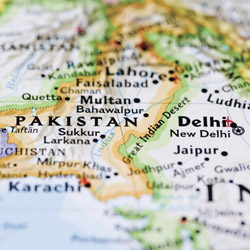Improving the Tools of Persuasion and Inspiration

A commitment to improved diplomatic and development capabilities is essential to our national security and economic well-being.
It would seem that the world is coming apart at the seams. Tensions and violence have risen between old enemies around the world, and new conflicts seem to arise weekly. Afghanistan, Iraq, and Israel and Palestine demand immediate attention. Combined with pressing domestic issues, one might think that the new administration takes office at one of the worst possible times in U.S. history. Rather, our leaders have a distinct opportunity to reassert a more positive presence in our global neighborhood, which would very likely offer economic dividends at home through improved diplomatic and development activities.
Secretary of Defense Robert Gates, speaking to the U.S. Global Leadership Campaign* last July, made the case for strong improvements in our non-military diplomatic and development capabilities—what he referred to as “the tools of persuasion and inspiration,” that are as important to foreign policy success as are our military capabilities.
Non-military U.S. interests abroad are represented by several important authorities, including embassies, consuls general and the U.S. Agency for International Development (USAID). While the international affairs budget has increased substantially under President George W. Bush, so has the demand for the services of the diplomatic and development cadre. In the past twenty years, the world has welcomed dozens of new countries as the USSR and Yugoslavia dissolved, each requiring embassies and U.S. representatives. To those increased demands was added the intense diplomatic and development pressures of Iraq, Afghanistan and other hot spots. When combined with other global challenges—such as AIDS and other pandemics, global warming and environmental degradation, and failing and rising states—the international affairs budget still falls short. These dynamic challenges must be met with a significantly more robust foreign affairs capacity that includes skillful diplomats and trained international development professionals.
To clarify the problems of our current foreign affairs capacity, the State Department reports a shortage of more than 2,400 personnel to conduct core diplomatic work and meet emerging policy challenges and public diplomacy needs. Moreover, that shortage contributes to inadequate training when the workforce is prevented from pursuing necessary training for fear of leaving operational jobs unfilled. For example, the Governmental Accounting Office found in 2006 that 29 percent of the language-designated positions at embassies and consulates were not filled with language-proficient staff. In addition, the shortage in trained embassy personnel contributes to lost opportunities to utilize public diplomacy to promote a positive image of the U.S. among the citizens of the host state.
USAID also suffers from personnel shortages. According to a report by the American Academy of Diplomacy, USAID currently has 2,200 personnel who administer more than $8 billion annually in development and other assistance. In 1990, nearly 3,500 personnel oversaw $5 billion annually. Moreover, there will be an increasing need for postconflict civilian stabilization efforts, tasks which should be managed by civilian staff through the State Department. Today, many of those tasks are being managed by the Department of Defense, a practice which contributes to what Gates laments as the “creeping militarization of diplomacy” and to the declining image of the U.S. in the world.
Diplomatic and development activities are vital to U.S. interests. Use of this “soft power” represents unlimited opportunities to build stronger economic, political and cultural ties between the U.S. and our global neighbors. Moreover, U.S. personnel engaged in diplomatic and development activities are the most important “eyes and ears” of the administration and other elements of U.S. society. Companies like Caterpillar, organizations like Catholic Relief Services, and average citizens who travel rely heavily upon—and benefit significantly from—the relationships that U.S. diplomatic and development personnel make in their host states. Those personnel must have the funding to be fully manned and trained, including language training, to go beyond the walls of the embassies and utilize the public diplomacy opportunities to interact and cultivate positive conditions for the U.S. and her interests around the world. In this way, the U.S. will be much better able to meet foreign policy challenges and recognize foreign policy opportunities.
Despite reports of a diminished world view of the United States, the U.S. remains the world’s leading military, political and economic power, what Abraham Lincoln referred to as the “last, best hope.” From around the world, people seeking freedom from despotism and desperation will continue to look to us as a global leader, and turn to us with hope. A commitment to improved diplomatic and development capabilities is essential to our national security and economic well-being, and to reaffirming our status in the world. iBi
*The USGLC is an organization of more than 400 diverse members who share an advocacy for the importance of diplomacy and international development to U.S. vital interests. The USGLC lobbies for full funding for the international affairs budget. Members include Caterpillar, Catholic Relief Services, AIPAC, Boeing, Save the Children and Motorola, to name a few of local interest.

